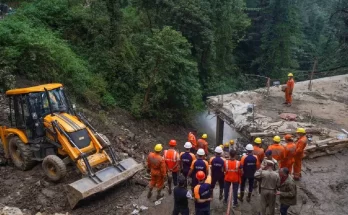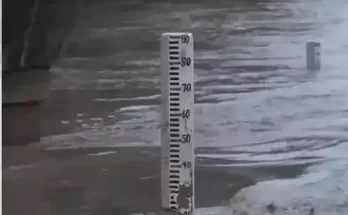Last week, after lightning struck in Bihar, as many as 11 people died and six others were left injured across the state. The same day, in Maharashtra, a 17-year-old boy died while trying to find mobile network on top of a tree; he was struck by lightning. Two farmers at one place and 30 sheep at another place in Telangana died after they were hit by lightning.
The number of lightning strikes has been increasing in India.
Several studies over the last two decades, including this from January 2021 have established that lightning activity has shown an increasing trend over the past few years. The sea surface temperature in the Arabian Sea, the convective available potential energy (CAPE) over the north-western Indian subcontinent, and the wind shear along the north-western coast also make important contributions to the lightning increase, indicating that the thermodynamic effects overwhelm the microphysical effects on lightning activity over the South Asia region.
However, a report by Climate Resilient Observing Systems Promotion Council ( CROPC) released on Wednesday noted that lightning deaths have decreased by almost 60 percent over the last three years. In 2018–19, after India recorded over 3400 deaths, CROPC along with the Ministry of Earth Sciences and its multiple agencies and NGOs, started a ‘Lightning Resilient India Campaign’ to spread awareness and increase early warning dissemination till the last mile.
More Lightning Strikes, Fewer Deaths: How?
Although the number of lightning strikes has increased, the number of deaths has decreased. With proper early warning systems (EWS) and mitigative efforts, deaths can be reduced.
Compared to 1,38,00,000 total strikes across India in 2019–2020, there were 1,85,44,367 strikes in 2020–2021, an increase of 46,83,989 strikes. This means a rise of 34% for the whole country.
During the same time, some states have witnessed a massive year-on-year rise in lightning strikes: 331 % in Punjab, 168% in Bihar, 164% in Haryana, 117% in Puducherry, 105% in Himachal Pradesh and 100% increase in West Bengal.
Meanwhile, there are states where lightning strikes were observed to be reduced between April 2020 till March 2021: Goa, Daman & Diu, Dadara & Nagar Haveli received -74% lightning strikes, which means, there were this many fewer percentage lightning strikes compared to last year. Then followed Tripura -70%, Nagaland -60%, Karnataka -34%, Assam -27%, Kerala -19%, Meghalaya, and Tamil Nadu, both -12%.
But deaths are more in Uttar Pradesh, Bihar, and Madhya Pradesh.

Who are the victims of lightning strikes?
Apart from analysis of state-wise lightning strikes and deaths, the Annual Lightning Report 2020–2021 has highlighted the lightning hotspots across India. This map was created analysing data from multiple sources and by scientists and data analytics from different government institutions apart from volunteer workers wherever associated with the campaign.

The CROPC report shows that the fatalities include:
66% males and 34% females
62% adults and 38% children
68% tribals and 32% non-tribals
96% rural and 4% urban
77% farmers and 23% others
Of the primary causes, the report said, as many as 71% of people died as they took shelter under a tree; 25% of them died due to direct hit by lightning and only 4% due to indirect hit.
There are more fatalities in the pre-monsoon to initial monsoon days as there is a large number of farmers in the agriculture field. Interestingly, the lightning strikes map coincides with the tribal-dominated areas of central and east India, said Col Sanjay Srivastava, chairperson CROPC.
Plus, disaster management authorities need to spread awareness about what needs to be done or need not be done during a lightning strike.
- Do not stand below a tree.
- Do not stand out in the open.
- Take shelter in a pucca structure.
- If available, one can take shelter in a motor vehicle.
Experts have listed out a few basic pointers to avoid being struck by lightning.
Is someone doing something right?
Odisha, for example, has been at the forefront in installing lightning arresters on all cyclone shelters. Bihar has a concept of ‘Safe Saturdays’ for all schools introducing children to disaster management.
Jharkhand has introduced ‘Lightning’ as a subject for classes I to X both theory and vocational. Col Srivastava, who was posted in that state about a decade ago, informed that there are lightning safe villages, cities, and government buildings such as schools and hospitals in that state.
“Installation of lightning arresters is vital,” he said.
It’s important to note that Disaster Management is an overarching subject and literally, everyone can make use of information and alerts. It’s not just for farmers. Land use planning, armed forces, tourism, heavy industry, dam operators, petrochemical storage and transport for mitigation measures and preventive actions and of course, academician, the scientific community, and social planners for studying and helping to reduce fatalities and other damage.
Originally published at https://www.boomlive.in on July 5, 2021.



